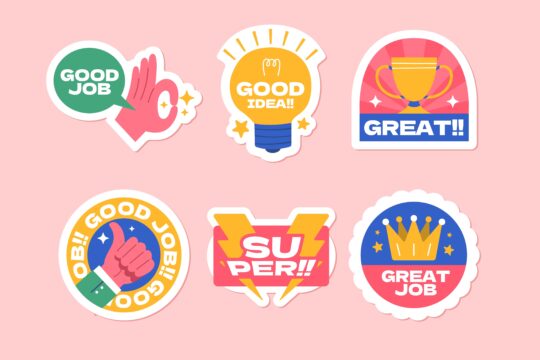The term “eLearning” may have been recognized but was hardly familiar to many teachers across the nation prior to this month’s turn of the calendar. Yet within just a few short weeks, this word “eLearning” has become the new standard for classrooms across the globe. With the outbreak of COVID-19, many educators have packed up their teaching tools to set up a workspace in their home where they hope to continue meeting benchmarks, teaching standards, and reaching all students’ educational needs. With such a fast rollout from a traditional classroom to one that is solely virtual, there are many tools that teachers can turn to to help get started. First, what exactly is eLearning? Then, what are some valuable eLearning resources that are quick to understand, easy to implement, and impactful on students’ learning?
What is eLearning?
eLearning is a term used to describe learning that utilizes electronic technologies to access educational curriculum outside of a traditional classroom. The course, program, or schooling is delivered completely online. Some use similar terms to describe this type of education such as electronic learning, distance education, or online learning. They generally all mean the same thing, that a student is taking a class delivered via the internet somewhere other than inside a classroom.
However, eLearning is more than just a recorded lesson. It is interactive in that students communicate with their teachers and often others in their class. Some work may be delivered live where students are responding in real time. Other times, a lesson may be prerecorded. eLearning courses include participation, assignments, and quizzes. This virtual type of learning can be a very positive alternative when a physical classroom setting is not an option.
eLearning Resources for Virtual Learning
There are so many eLearning resources available on the web that it can be overwhelming to know how to get started. The following is a list of a few tools that are fairly easy for teachers to familiarize themselves with in a short amount of time and help to leave a positive impact on students’ learning.
Zoom
Zoom markets itself as a video conferencing platform that enhances and expands classes through powerful collaboration tools. Getting started is quite easy. Once connected using an email address, users have the option to start a new meeting, join a meeting (using a code or link that gets emailed), schedule a meeting, or share their screen. Within 15 minutes of clicking around on both the web-based site as well as the app that can be downloaded on a cell phone, I felt comfortable enough to join or host my own meeting.
There are many options for using Zoom for eLearning. First of all, administrators can hold virtual staff meetings that allow everyone to have a voice and be seen without having to be in the same location. Additionally, teachers can use Zoom to host live lessons that students are able to join and participate in. There is a chat feature that allows students to ask questions during instruction. Educators also have the option of various tools (such as a whiteboard) that are helpful when explaining concepts or modeling expected work. Zoom also has useful and fun components such as changing the virtual background. If finding a quiet space while working from home has been an obstacle, use the virtual background to blur out everyone (or everything) but yourself. Or why not teach from the library, an ocean, or a soccer field? The options are limitless and sure to excite learners.
Google Classroom
While Zoom is great for video conferencing and recording lessons, Google Classroom is well designed to help teachers manage coursework. Created by a partnership between Google and educators across the nation, Google Classroom has just about everything teachers need to run a virtual class. To get started, teachers create a class and invite students to join by email, through a school domain, or with a private class code. Once students are connected teachers are able to post assignments, message back and forth with students, and leave announcements. Teachers can view their students work in real-time and offer feedback throughout the assignment. With more than 30 million teachers and students using Google Classroom worldwide, it is a sure place to turn to for a successful eLearning space.
Khan Academy
eLearning does not need to mean filming oneself instructing every lesson that would normally take place in a classroom. There are many websites and apps that have readily made lessons that save someone from reinventing the wheel. Khan Academy is a nonprofit educational organization that has been around since 2008. The goal is to create a set of online tools that help educate students in grades K-12, and educate it has. Khan Academy has been translated into dozens of languages, and 100 million people use the platform worldwide every year. It also has a Khan Kids component that dynamically adapts so that students can learn at their own pace and have an individualized experience. This is yet another valuable resource for eLearning.
Story Starters
Once you have a platform established such as Zoom or Google Classroom and are recording lessons or using readily made ones such as found on Khan Academy, then it may be time to seek beneficial websites, programs, or apps for students to solidify their learning with. Scholastic Story Starters is a fun, interactive tool for computers and tablets that generates writing prompts from general fiction to adventure, fantasy, and science fiction. The website is designed for students in grades K-6 and provides a teacher’s guide and lesson materials. Writing topics are not always easy to come by, and Scholastic Story Starters is fun for students and supports teachers writing instruction.
Edpuzzle
Video clips are a great way to support student learning but often come with bothersome popup ads and little opportunity for students to process their learning throughout. Edpuzzle changes that. This app allows teachers to pull a video from the internet and then customize it to meet the lesson goals. Teachers can insert questions throughout the video where students need to pause and answer. Edpuzzle also is able to track how long students are spending on the clip to ensure that nothing is being skipped or fast forwarded through. Educators can even voice over parts of the video where more explanation or clarification is needed. This app has a free version for educators and is compatible with most devices.
The term eLearning may have been recognized but hasn’t been widely used by educators. eLearning is described as learning that utilizes electronic technologies to instruct students outside of a traditional classroom. Since the covid-19 outbreak, this online learning has been quickly unrolling as teachers go full steam ahead into their new instructional norms. There are many eLearning resources available on the web that are fairly easy to implement and guide student’s learning. By using these effective virtual tools, teachers can continue to be a positive presence and guiding force in their students’ education.




